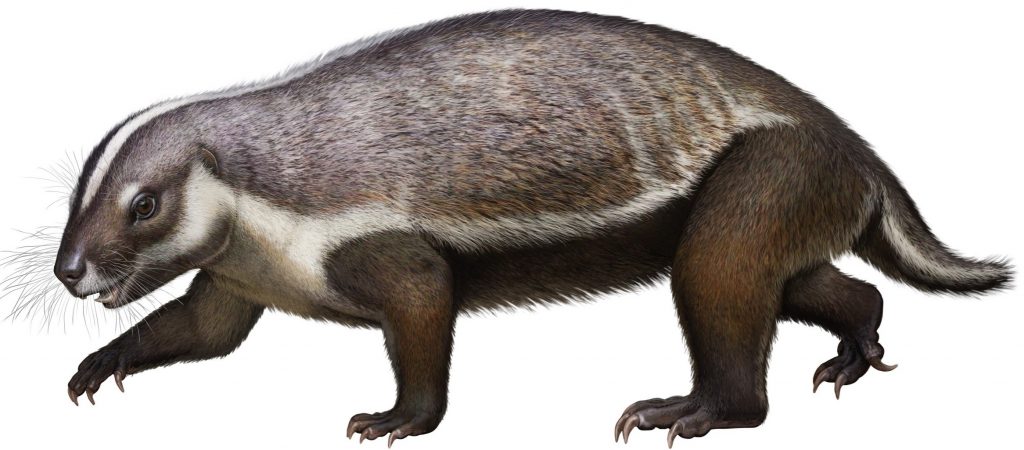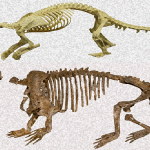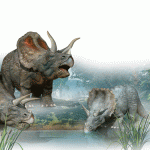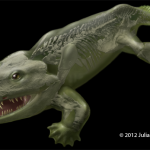
A reconstruction of Adalatherium, the ‘crazy beast’ uncovered on Madagascar.
A new mammal from an essentially unknown group found only in the Southern Hemisphere has been revealed by international research involving palaeontologists from Monash University.
The full fossil skeleton allows a reconstruction of what appears an unprecedentedly bizarre mammal from the age of dinosaurs. The research, published in Nature, names the new mammal Adalatherium, meaning ‘crazy beast’ in Malagasy and Greek. It lived 66 million years ago on the island of Madagascar, according one of the only Australian authors of the study, Dr Alistair Evans, an Associate Professor from the Monash University School of Biological Sciences, and the preserved fossil contains almost all of the bones and teeth of the individual. It was found by Dr David Krause, a curator at the Denver Museum of Nature & Science, and his team in 1999. It has taken 20 years to study in detail every aspect of the fossil, to show what type of mammal it was and how it likely lived in its ecosystem.
The research team showed that this is the first fossil skeleton from a group of mammals called gondwanatherians, named after the southern supercontinent Gondwana, which was made up of Australia, Africa, Madagascar, South America and India. All previous fossils of this group were only teeth, or the single skull from another Madagascan fossil called Vintana, so scientists had almost no idea of what they looked like.
Associate Professor Evans was part of the team who studied the teeth of the beast.
“We could never have believed we would find such an extraordinary fossil of this mysterious mammal,” Associate Professor Evans said. “This is the first real look at a novel experiment in mammal evolution. The strangeness of the animal is clearly apparent in the teeth – they are backwards compared to all other mammals, and must have evolved afresh from a remote ancestor.”
At the time this animal lived, mammals were mostly the size of a mouse. The new mammal was a giant compared to them, being the size of a cat, weighing an estimated three kilograms. Its large claws and robust legs suggest it may have been a capable digger.
Adalatherium may be so unusual because it evolved isolated on an island for tens of millions of years, and so found its own solutions to how to move and find food.
“This is a similar situation to the marsupial mammals of Australia – so different from the animals of the rest of the world,” said Associate Professor Evans.






